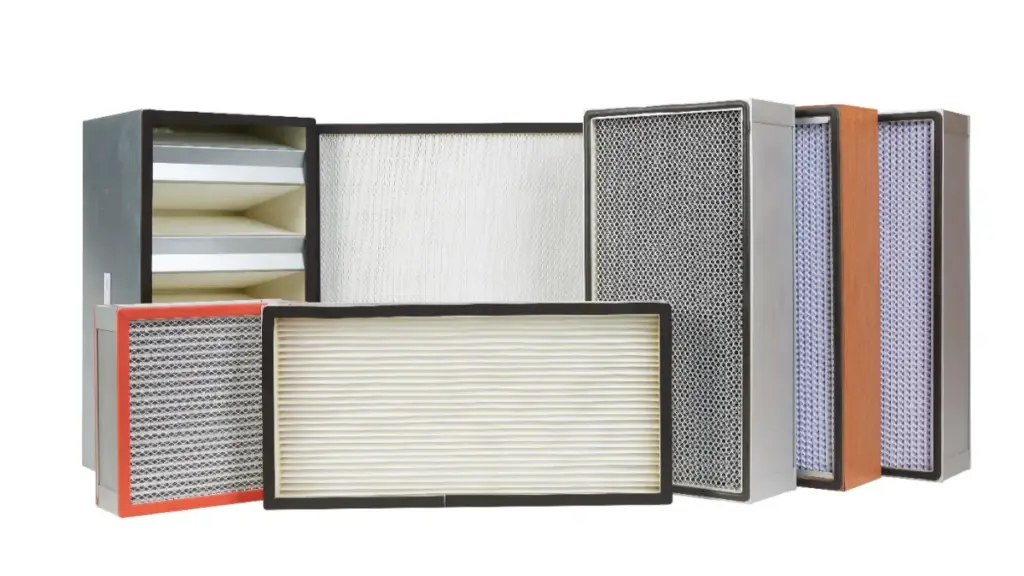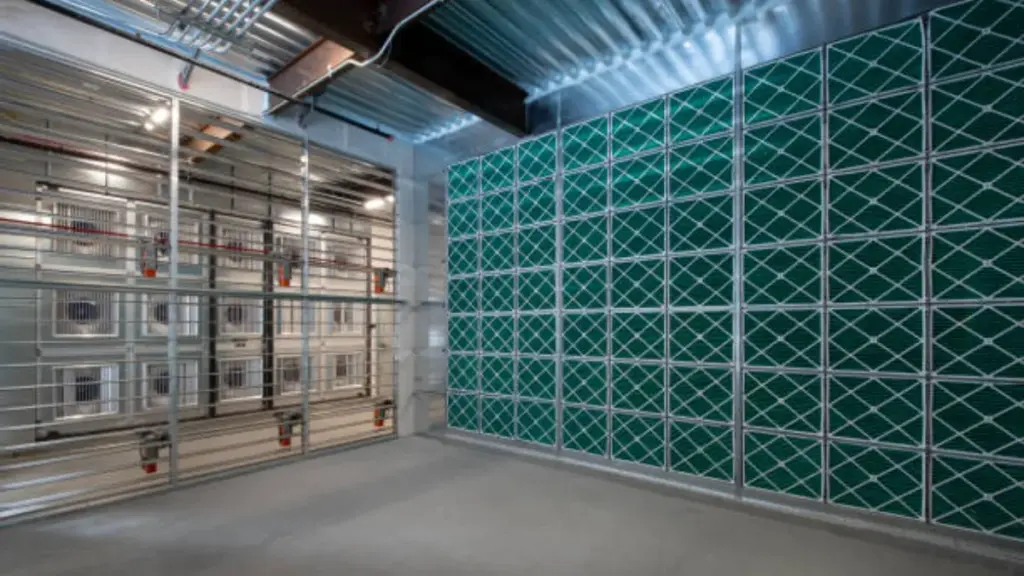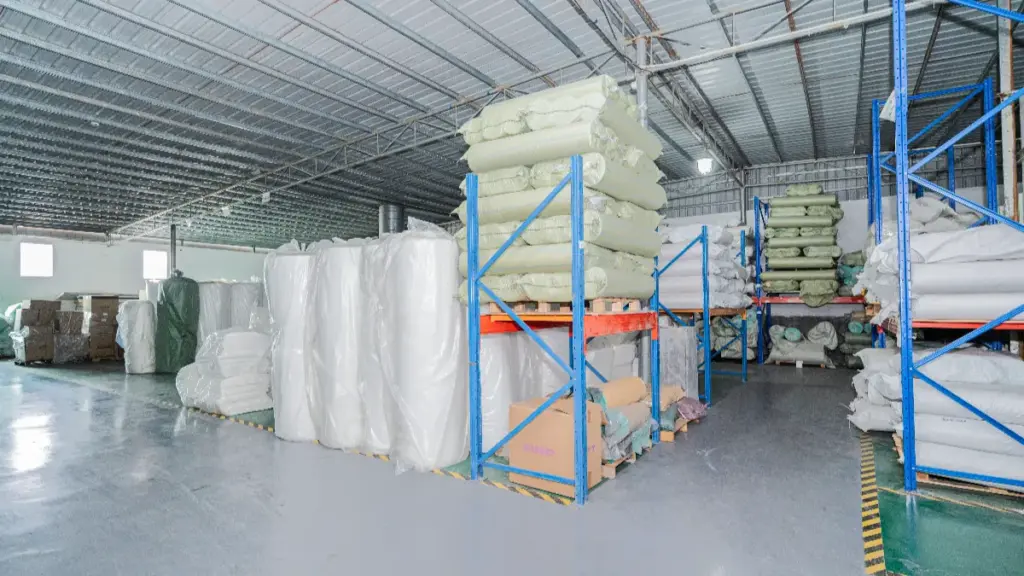عندما يتعلق الأمر بالسيطرة على الملوثات المحمولة جواً في بيئات حساسة, مرشحات HEPA هي المعيار الذهبي. ولكن ليس كل مرشحات HEPA يتم إنشاؤها على قدم المساواة. ضمن فئة HEPA, يتم استخدام درجتين مشتركتين - H13 و H14 - في كثير من الأحيان عبر الرعاية الصحية, غرف التنظيف, الأدوية, إنتاج أشباه الموصلات, وحتى أنظمة HVAC المتميزة.
يعد فهم الفرق بين مرشحات H13 و H14 أمرًا بالغ الأهمية عند تصميم أو الحفاظ على نظام ترشيح الهواء فعال. سوف يسير هذا الدليل من خلال الفروق الفنية, تطبيقات العالم الحقيقي, وكيفية اختيار الخيار الصحيح بناءً على احتياجاتك.
ما هي مرشحات HEPA?
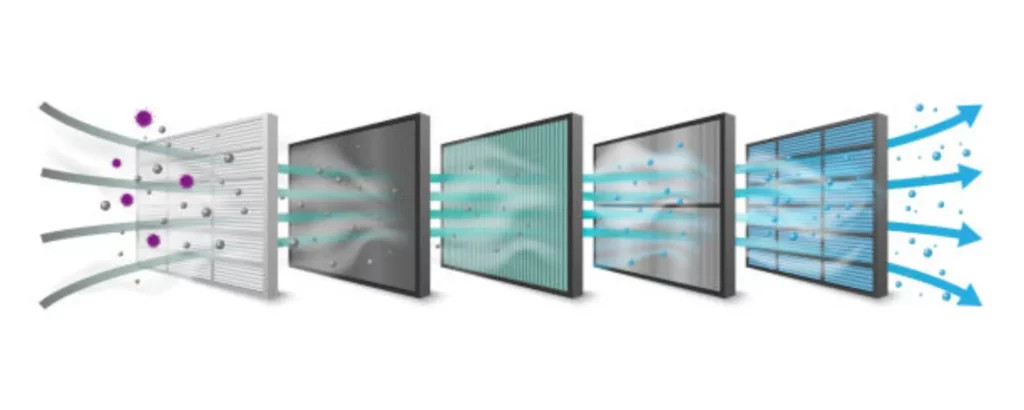
هيبا يرمز إلى الهواء الجسيمي عالي الكفاءة, معيار ترشيح يستخدم لوصف المرشحات التي يمكن أن تصف نسبة مئوية عالية من الجزيئات المجهرية. تم تطويره في الأصل خلال مشروع مانهاتن لالتقاط الجسيمات المشعة, تم تبني مرشحات HEPA الآن على نطاق واسع في الصناعات التي تتراوح من الرعاية الصحية والفضاء إلى أجهزة تنقية الهواء السكنية.
ليتم تصنيفها على أنها أ مرشح HEPA الحقيقي, يجب أن يستوفي المنتج معايير الأداء التي وضعتها المعايير الدولية. اثنان من الأكثر شهرة:
- في 1822 (القاعدة الأوروبية): يصنف المرشحات من E10 إلى U17 بناءً على كفاءتها في حجم الجسيمات الأكثر اختراقًا (MPPs), عادة حوالي 0.1-0.3 ميكرون.
- ISO 29463: تكيف عالمي لـ EN 1822 مع منطق تصنيف مماثل.
ضمن هذه المعايير, مرشحات H13 و H14 هي الأكثر استخدامًا لتنظيف الهواء عالي الأداء. كلاهما ينتمي إلى مجموعة HEPA (على عكس EPA أو ULPA), لكنها تخدم احتياجات مختلفة بناءً على كفاءة الترشيح وتوافقها في النظام. يعد فهم خلافاتهم أمرًا ضروريًا قبل إجراء عملية شراء أو تحديدها لنظام HVAC أو نظام التنظيف الخاص بك.
الاختلافات الرئيسية بين مرشحات H13 و H14 HEPA

بينما تندرج كل من مرشحات H13 و H14 تحت تصنيف HEPA وفقًا لـ EN 1822 و ISO 29463 المعايير, وهي مصممة لتلبية متطلبات الأداء والتحكم المختلفة. يوفر الجدول أدناه مقارنة موجزة للاختلافات الأساسية عبر الأبعاد التقنية والتشغيلية الحرجة.
| وجه | H13 مرشح HEPA | H14 مرشح HEPA |
| كفاءة الترشيح (في MPPS) | ≥ 99.95% | ≥ 99.995% |
| اختلاف الاحتفاظ بالجسيمات | الأداء القياسي | 10× احتباس أعلى على مقياس السجل |
| نطاق MPPS | 0.12-0.25 ميكرون (عادي) | نفس |
| انخفاض الضغط (أولي) | 200-250 PA @ 0.45 آنسة | 300-350 PA أو أعلى |
| استهلاك طاقة المروحة | انخفاض حمل الطاقة على المدى الطويل | +10-15 ٪ زيادة سنوية (إذا ΔP > 80 السلطة الفلسطينية) |
| اختبار التسرب | اختياري أو اختبار دفعي | اختبار تسرب المصنع الفردي الإلزامي |
| متطلبات الختم | حشية الرغوة / إطارات مسطحة | ختم هلام / حافة سكين / يوريتان بوتينغ |
| تصفية بنية الوسائط | عمق الطلاء القياسي (25-50 مم), كثافة معتدلة | الطيات العميقة (70-00 ملم), ألياف أكثر كثافة وأدق |
| التكلفة الأولية (الحجم القياسي) | $50- 90 دولار (بناءً على المواصفات النموذجية) | $70- 120 دولار (يختلف مع نوع الختم ونوع الإطار) |
| توافق التثبيت | مناسبة لمعظم تطبيقات HVAC والمنطقة النظيفة | قد تتطلب ترقيات السكن بسبب الحجم أو الوزن |
| التطبيقات النموذجية | المستشفيات, المختبرات, تجاري HVAC, ISO Class 7–8 | غرف التنظيف, وحدة العناية المركزة/أو, إلكترونيات صغيرة, الأدوية المعقمة (ISO 5–6) |
كفاءة الترشيح ومعدل التقاط الجسيمات
مرشحات HEPA فخ الجزيئات من خلال مزيج من الاعتراض, انحراف بالقصور الذاتي, والانتشار - الآليات التي تختلف في الهيمنة اعتمادًا على حجم الجسيمات. MPPs حولها عادة 0.12-0.25 ميكرون, هو الأكثر صعوبة في التقاطه وبالتالي يتم استخدامه لتصنيف المرشح.
- مرشحات H13 يجب تحقيق الحد الأدنى من كفاءة 99.95% في MPPS.
- مرشحات H14 يجب تحقيق 99.995 ٪ - تحسن بعشرة أضعاف في الاحتفاظ بالجسيمات على مقياس لوغاريتمي.
على الرغم من أن الفرق في الكفاءة المقدرة بين H13 (99.95%) و H14 (99.995%) هو فقط 0.045%, يمكن أن يكون تأثير العالم الحقيقي مهمًا في أنظمة معالجة الهواء الكبيرة. على سبيل المثال, النظر في نظام افتراضي يعالج 10,000 M³ من الهواء في الساعة مع متوسط حمولة الجسيمات 1 ملغ/م. على مدار عام, إضافي 0.045% معدل التقاط الجسيمات من H14 من شأنه أن يساوي التقاط حوالي 4.0-4.5 جرام جسيمات submicron أكثر من H13.
ΔEFFICATION = 0.00045 (أي., 0.045%)
→ 0.00045 × 1 ملغ/م × 10,000 M³/H × 24 H/Day × 365 أيام ≈ 39,420 ملغ/سنة ≈ 39.4 غرام
مقاومة تدفق الهواء وانخفاض ضغط النظام
يشير انخفاض الضغط إلى فقدان ضغط الهواء حيث يمر الهواء عبر مرشح, نتيجة مباشرة لمقاومة وسائط المرشح لتدفق الهواء. المقاومة الأعلى تعني أن هناك حاجة إلى مزيد من الطاقة للحفاظ على أسعار صرف الهواء المطلوبة.
- مرشحات H13 عادةً ما يقدم انخفاضًا في ضغط 200-250 باسكال في تدفق الهواء المقنن (~ 0.45 م/ث).
- مرشحات H14 يمكن أن تصل إلى 300-350 باسكال أو أكثر, اعتمادا على كثافة الطية, عمق وسائل الإعلام, وتصميم الإطار.
في الممارسة العملية, قد يؤدي اختيار H14 دون تقييم توافق النظام إلى تسوية معدلات توصيل الهواء وزيادة تكاليف التشغيل.
متطلبات مخاطر التسرب والمرشح
لا تعتمد الفعالية الكلية لفلتر HEPA ليس فقط على كفاءة الوسائط ولكن أيضًا على الأداء الخالي من التسرب. حتى الالتفافية الصغيرة يمكن أن تترك الهواء غير المفلح في بيئات حرجة, تقويض الأداء.
- مرشحات H13 خضع للاختبار القياسي للتسرب وقد يتم تركيبه باستخدام حشوات الرغوة أو إطارات الخبرة المسطحة, وهي مناسبة للعديد من التطبيقات الصناعية والتجارية.
- مرشحات H14, على النقيض من ذلك, تتطلب اختبارات تسرب المصنع الفردية (في كثير من الأحيان باستخدام Aerosols PAO أو PSL) ويجب تثبيتها بإطارات جلود الهلام, العلب حافة السكين, أو يوريتان بوتينج لضمان صفر الالتفافية.
تقنيات الختم هذه تزيد من التكلفة وتعقيد التثبيت ولكنها ضرورية للمرشحات ذات التصنيفات العالية للغاية. في البيئات التي يكون فيها التحكم في الجسيمات أمرًا مهمًا للمهمة, حتى أ 0.01% يمكن أن ينفي التسرب أداء H14 المتفوق.
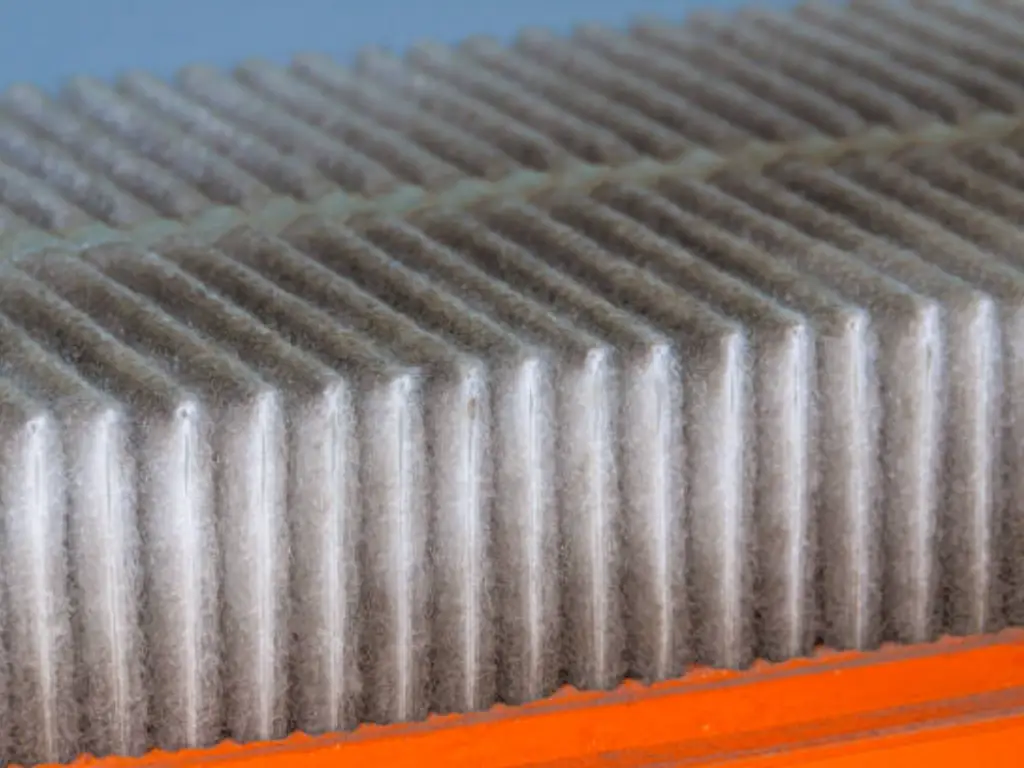
هيكل المواد وقيود التصميم
الفرق في كفاءة الترشيح بين مرشحات H13 و H14 التي تنفذت أيضًا من خلال جودة وسائط المرشح, كثافة الوسائط, هندسة الطية, ومساحة السطح الإجمالية. لتحقيق معدل التقاط الجسيمات الأكثر إحكاما 99.995%, عادة ما تستخدم مرشحات H14 أليافًا أكثر كثافة أو أدق, في كثير من الأحيان مع تصميمات أكثر إحكاما أو عميقا لزيادة مساحة سطح المرشح دون التضحية بتدفق الهواء.
- مرشحات H13 عادة ما تتميز بوسائط عمق قياسية (25-50 مم) مع تباعد الطية أوسع, موازنة تدفق الهواء الجيد بكفاءة عالية.
- مرشحات H14, بالمقارنة, قد تتطلب عبوات عميقة (70-00 ملم) أو الوسائط متعددة الطبقات لتقليل انخفاض الضغط مع الحفاظ على الكفاءة. تؤدي الوسائط الكثيفة أيضًا إلى ارتفاع وزن المرشح وأحيانًا أحجام إطار أكبر.
تؤثر هذه الاختلافات الهيكلية ليس فقط على ديناميات تدفق الهواء ولكن أيضًا متطلبات التثبيت. للأنظمة ذات العمق المحدود أو التعديل التحديثي في غرف التنظيف القديمة, قد تكون مرشحات H14 غير متوافقة ميكانيكيًا ما لم تتم ترقية السكن. على العكس, توفر مرشحات H13 مزيدًا من المرونة في أبعاد الإطار وأسهل الاندماج عبر مجموعة أوسع من تكوينات HVAC.
مقارنة التكلفة والقيمة طويلة الأجل
عند تقييم المرشحات للبيئات عالية الأداء, تكلفة الشراء الأولية ليست سوى جزء من التكلفة الإجمالية للملكية, والتي تشمل أيضًا تواتر استهلاك الطاقة وصيانتها بمرور الوقت.
- مرشحات H14 تكلفة عمومًا 20-40 ٪ أكثر من مرشحات H13, مدفوعًا بتحمل أكثر تشددًا للتصنيع, اختبار التسرب الفردي, وأنظمة الختم المتقدمة. على سبيل المثال, يتراوح مرشح H13 قياسي 610 × 610 × 292 مم $50 ل $90, في حين أن مرشح H14 مماثل قد يكلف $70 ل $120, اعتمادًا على نوع الوسائط, مادة الإطار (على سبيل المثال, الصلب المجلفن مقابل الألومنيوم), وما إذا تم تضمين ميزات مثل Gel Seal أو شهادة الاختبار (بناءً على قوائم السوق من Camfil, AAF, وأبابا B2B منصات).
- بالإضافة إلى ارتفاع تكلفة الشراء, عادة ما تظهر مرشحات H14 قطرات ضغط أعلى - والتي تترجم إلى زيادة عبء عمل المروحة واستخدام الطاقة. في العمليات بدوام كامل, يمكن أن يصل الفرق السنوي في استهلاك طاقة المعجبين إلى 10-15 ٪, خاصة إذا تجاوز اختلاف الضغط الثابت 80 السلطة الفلسطينية.
سيناريوهات التطبيق وحالات الاستخدام
في حين أن كل من مرشحات H13 و H14 HEPA تنتمي إلى نطاق الكفاءة العالية, تختلف تطبيقات العالم الحقيقي بناءً على متطلبات النظافة, المعايير التنظيمية, وتوافق النظام.
- مرشحات H13 تستخدم على نطاق واسع في المباني التجارية, أجنحة المستشفى العامة, المختبرات, أنظمة HVAC الصيدلانية, ومناطق نظيفة صناعية (ISO Class 7–8). أنها توفر توازنًا قويًا بين كفاءة الترشيح والمرونة التشغيلية, جعلها مناسبة لمعظم البيئات التي تسيطر عليها لا تتضمن عمليات حساسة للغاية.
- مرشحات H14, بسبب ارتفاع معدل التقاط الجسيمات ومتطلبات تسرب أكثر صرامة, مفضلة في التطبيقات الحرجة مثل غرف التنظيف للإلكترونات الدقيقة, خطوط ملء الأدوية العقيم, وحدات العناية المركزة ومسارح التشغيل, ومختبرات السلامة الحيوية (BSL-3/4). تتطلب هذه البيئات تلوث الجسيمات القريب من الصفر, حيث قد يعرض أصغر جسيم تسوية سلامة أو سلامة المنتج.
إيجابيات وسلبيات H13 و H14 HEPA مرشحات

تقدم كل من مرشحات H13 و H14 تنقية الهواء عالية الكفاءة, لكن كل منها يأتي مع مقايضات في التكلفة, أداء, والتركيب. يساعد فهم إيجابياتهم وسلبياتهم على ضمان اختيار المرشح المناسب لتلبية احتياجاتك المحددة.
H13 مرشح HEPA
✅ إيجابيات:
- فعالة من حيث التكلفة: انخفاض تكلفة الشراء الأولية وانخفاض استهلاك الطاقة مع مرور الوقت.
- انخفاض انخفاض الضغط: أسهل في الاندماج في أنظمة HVAC القياسية دون تعديل سعة المروحة.
- التثبيت المرن: متوافق مع مجموعة واسعة من وحدات مناولة الهواء, شبكات السقف, ومرشح العلب.
- يكفي للعديد من البيئات النظيفة: تلبي متطلبات ISO من الفئة 7-8 والتحكم في التلوث العام.
- متاح بسهولة: تم تخزينه على نطاق واسع من قبل معظم موردي المرشحات ومصنعي المعدات الأصلية.
❌ سلبيات:
- انخفاض كفاءة الترشيح: يلتقط 99.95% في MPPS, والتي قد لا تكون كافية للمناطق الحرجة للغاية.
- ارتفاع خطر الالتفاف الجسيمات في البيئات الحساسة: لا ينصح به حيث يجب تقليل تلوث الميكرون الفرعي إلى مستويات قريبة من الصفر.
- لا يتم اختبار تسرب بشكل فردي افتراضيًا: قد تفتقر إلى وثائق ضمان الجودة المطلوبة في GMP أو تطبيقات الدرجة الصيدلانية.
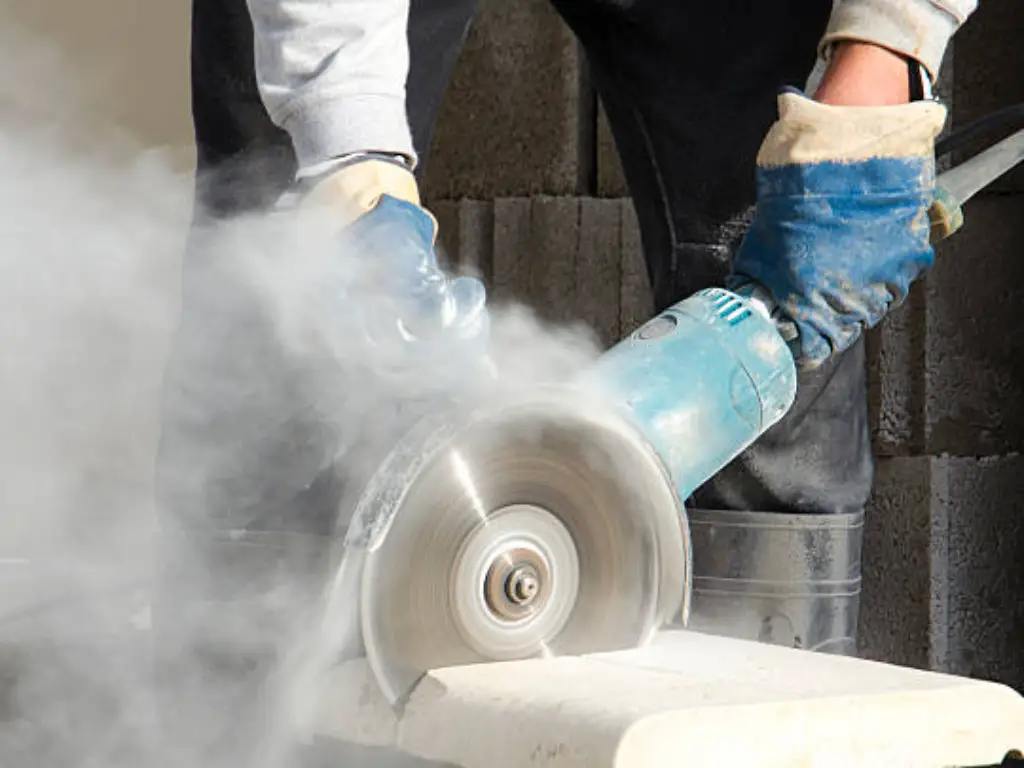
H14 مرشح HEPA
✅ إيجابيات:
- كفاءة ترشيح أعلى: يلتقط 99.995% في MPPS, تقديم تحكم في الجسيمات متفوقة.
- تم اختباره بشكل فردي: يضمن كل وحدة تلبي معايير الأداء الصارمة, مثالي للبيئات التي تم التحقق من صحتها.
- متوافق مع المعايير الحرجة: مطلوب في غرفة النظافة من الفئة 5-6 ISO, مختبرات السلامة الحيوية, ومناطق ملء معقمة.
- هامش السلامة المحسّن: مناسب للاستخدام في التطبيقات التي يكون فيها تلوث التتبع غير مقبول.
❌ سلبيات:
- ارتفاع تكلفة مقدمة: عادة ما يكون 20-40 ٪ أكثر تكلفة من مرشحات H13 ذات حجم مكافئ ونوع الإطار.
- انخفاض ضغط أكبر: يزيد من متطلبات الطاقة وقد تتطلب ترقيات النظام.
- مزيد من التثبيت: يتطلب إطارات جلسة الهلام, العلب حافة السكين, أو يوريتان بوتينج لضمان تسرب الصفر.
- أثقل وأكبر: قد تكون تصميمات الوسائط العميقة أو الكثيفة غير متوافقة مع علب المرشحات المدمجة.
كيفية قراءة ومقارنة معايير الترشيح: في 1822, ISO 29463 و merv
تستخدم المناطق والصناعات المختلفة معايير ترشيح مختلفة لتصنيف مرشحات الهواء. فهم كيف 1822, ISO 29463, ويمكن أن تساعد تصنيفات MERV في ضمان اختيار المرشح المناسب بناءً على متطلبات الأداء, الامتثال التنظيمي, أو التوافق عبر السوق.
جدول مقارنة فئة كفاءة المرشح
| في 1822 فصل | ISO 29463 فصل | نطاق MERV النموذجي | الحد الأدنى من الكفاءة (@ 0.3 μM) | تصنيف |
| E10 | ISO E10 | ميرف 16 | ≥ 85% | EPA (الهواء الجسيمات الفعال) |
| E11 | كبير E11 | MERV 16-17 | ≥ 95% | EPA |
| E12 | ISO E12 | ميرف 17 | ≥ 99.5% | EPA |
| H13 | كبير H13 | ~ Merv 17-18 | ≥ 99.95% | هيبا (جسيمات عالية الكفاءة) |
| H14 | ISO H14 | ~ Merv 18-19* | ≥ 99.995% | هيبا |
| U15 | كبير U15 | - | ≥ 99.9995% | ULPA (هواء الاختراق منخفض الانخفاض) |
| U16 | كبير U16 | - | ≥ 99.99995% | ULPA |
| U17 | ISO U17 | - | ≥ 99.999995% | ULPA |
*ملحوظة: تصنيفات MERV أعلاه 17 لا يتم تعريفهم رسميًا بواسطة Ashrae Standard 52.2 ولكن في بعض الأحيان تستخدم بشكل غير رسمي في تسويق المنتجات. للتطبيقات الحرجة, في 1822 أو ISO 29463 يجب إعطاء الأولوية لتصنيفات.
مطالبات مضللة وقضايا الشهادات في وضع العلامات على مرشح HEPA
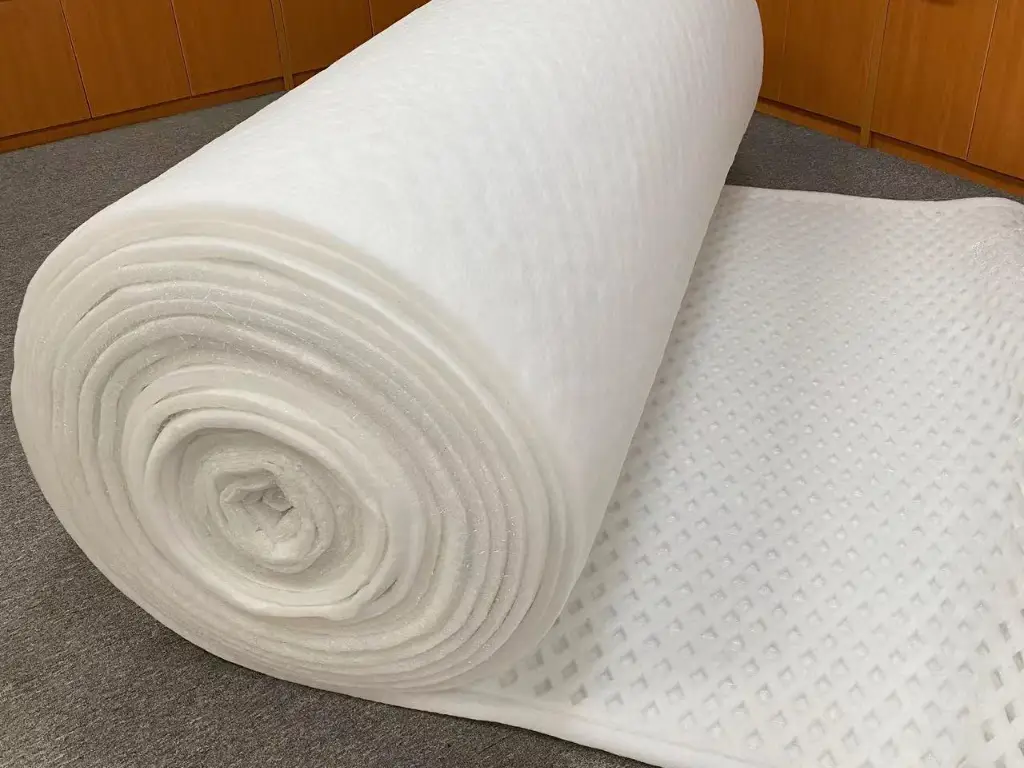
العديد من المنتجات التجارية, خاصة أجهزة تنقية الهواء على مستوى المستهلك, تم تصنيفها على أنها "HEPA" بدون شهادة أو اختبار اختبار.
احترس:
- مرشحات "Hepa-Type" أو "Hepa-like" (في كثير من الأحيان MERV 13-16, ليس HEPA الفعلي)
- نقص بيانات كفاءة MPPS
- لا ذكر لـ en 1822 أو ISO 29463
- عدم وجود تقارير اختبار تسرب المرشح الفردي
اطلب دائمًا شهادة المطابقة, خاصة بالنسبة للبيئات الحرجة. كشركة تصنيع مرشح الهواء المهنية, نحن نقدم مرشحات HEPA معتمدة بالكامل, تم اختباره وفقًا لـ EN 1822 مع تقارير اختبار المسح الاختيارية والبناء المقاوم للتسرب (ختم هلام أو يوريتان بوعية).
اختيار مرشح HEPA الصحيح لاحتياجاتك
إليك كيفية اتخاذ قرار مستنير:
- حدد متطلبات نظافة الهواء لمساحتك (فئة ISO, أنظمة, مخاطرة).
- تقييم إذا 99.95% (H13) الكفاءة كافية. إذا كانت الإجابة بنعم, اذهب مع H13 لانخفاض المقاومة والتكلفة.
- للتطبيقات المعقمة أو الحرجة, H14 على الأرجح غير قابل للتفاوض.
- تحقق من تصميم النظام: هل يمكنه التعامل مع انخفاض الضغط العالي من H14? هل لديك مجال لحزم الوسائط الأعمق أو إطارات المرشحات الأكبر?
- تحقق من معايير الشهادات وطلب الوثائق.
على استعداد لاختيار مرشح HEPA الصحيح? اسمح لك حلول ترشيح الهواء الدقيقة
في مرشح التهوية, نحن متخصصون في الإنتاج صحيح H13 و H14 مرشحات HEPA التي تلبي أو تتجاوز en 1822 و ISO 29463 المعايير. نلقينا:
- مرشحات تم اختبارها بشكل فردي مع ضمانات خالية من التسرب
- التحجيم المخصص لتناسب الأنظمة القديمة أو الحديثة
- الدعم عبر الصناعات: الرعاية الصحية, الأدوية, الإلكترونيات, أكشاك الطلاء, وأكثر
دعنا نساعدك على تحديد حل المرشح الأمثل. اتصل بنا اليوم للتحدث مع خبرائنا الفنيين.

